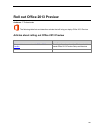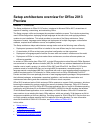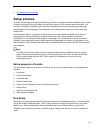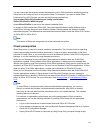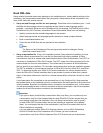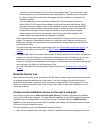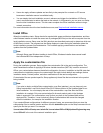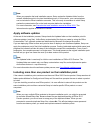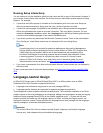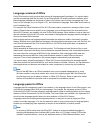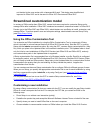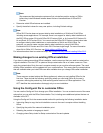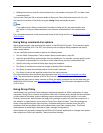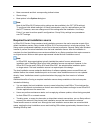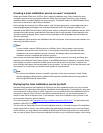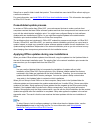
108
Running Setup interactively
You can choose to run the installation quietly so that users see little or none of the process. However, if
you let users view the Setup user interface, the choices that you make affect several aspects of Setup
behavior. For example:
If more than one Office product is available on the installation point and a user runs Setup.exe
without command-line options, Setup gives the user a choice of products to install.
If more than one language is available on the installation point, Setup matches the language of
Office to the Windows user locale on the user's computer. This is by default. However, if a user
selects the Customize installation option, the Languages tab in the Setup interface gives the user
a choice of all available languages on the network installation point.
If you enter a product key and accept the Microsoft Customer License Terms in the customization
file or Config.xml, those Setup screens are not displayed to the user during Setup.
Note:
A product key entry is not required for enterprise deployments that use Key Management
Service (KMS) activation because all Volume License editions of Office 2013 Preview have
a KMS client key pre-installed. KMS is one of the methods that are provided by Office
Activation Technologies for activating products that are licensed under Microsoft Volume
Licensing programs. A prompt for a product key does not occur for Volume License
editions of Office 2013 Preview, even when Setup runs in interactive mode. For more
information about volume activation, see Plan volume activation of Office 2013 Preview.
If you use a customization file to hide and lock certain features, those features are not displayed in
the feature tree.
To learn more about how to customize display settings, see Customize Setup before installing Office
2013.
Language-neutral design
In Office 2013 Preview (and in Office 2010and Office 2007), an Office product such as Office
Professional Plus 2013 Preview is organized as follows:
Language-neutral elements are grouped in one core package (MSI file).
Language-specific elements are organized in separate packages by application.
This arrangement of files simplifies international deployments. The most basic installation of an Office
product consists of the core package plus one language. Adding more languages is as easy as copying
additional Single Language Packs (SLPs) to the network installation point — all work with the core
product in exactly the same way. All language versions of Office, including the English version, are
deployed in the same manner. Setup combines the language-neutral core package with the language-
specific packages in a seamless installation process.
Important:
The current Office 2013 Preview release includes English, Japanese, and Spanish language
sources only. Later releases will provide additional languages.



